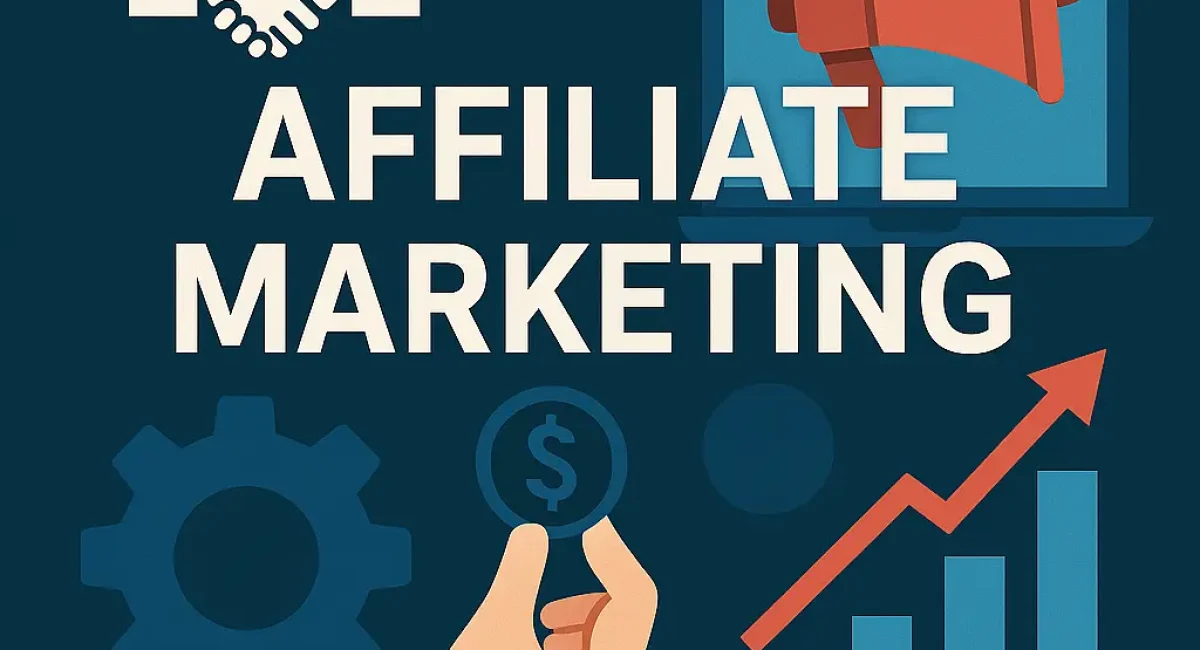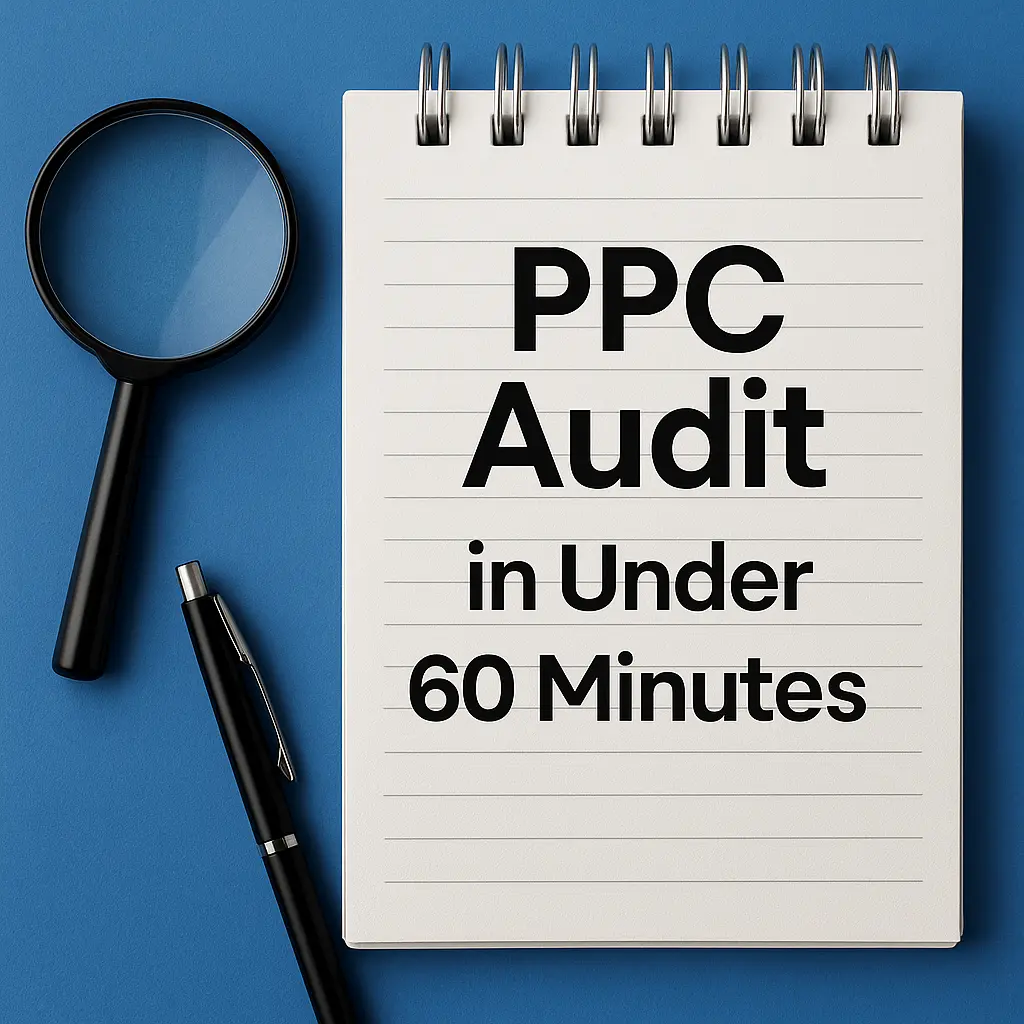Affiliate Marketing for B2B: A Smart Growth Channel Most SaaS Brands Ignore
In the fast-paced world of B2B and SaaS growth, companies are constantly on the lookout for cost-effective, high-ROI channels to scale their customer base. While strategies like content marketing, paid ads, and SEO dominate the conversation, one powerful lever remains surprisingly underutilized: B2B affiliate marketing. Often pigeonholed as a tactic for eCommerce brands hawking consumer goods, affiliate marketing is quietly emerging as a game-changer for SaaS partnerships and lead generation in the B2B space.
Imagine driving qualified leads and sales through a network of trusted partners who only get paid when they deliver results. That’s the promise of affiliate marketing—a performance marketing model built on trust, accountability, and mutual benefit. For SaaS brands, where customer acquisition costs (CAC) can be steep and sales cycles long, this approach offers a way to tap into new audiences with minimal upfront risk. Yet, despite its potential, many B2B companies overlook this channel, leaving growth opportunities on the table.
In this comprehensive guide, we’ll explore why affiliate marketing deserves a spot in your B2B growth toolkit. From structuring effective partner programs to recruiting the right affiliates and avoiding common pitfalls, this article will equip founders, CMOs, and affiliate managers with actionable insights to build and scale a program that drives measurable results. Let’s dive into how B2B affiliate marketing can become your next big growth engine.
What Is B2B Affiliate Marketing and Why Does It Matter?
Affiliate marketing, at its core, is a partnership where businesses reward third parties (affiliates) for driving traffic, leads, or sales through their promotional efforts. In the B2B context, this often means collaborating with industry influencers, complementary software providers, or content creators who have access to your target audience. Unlike traditional advertising, where costs are incurred regardless of outcomes, B2B affiliate marketing operates on a performance-based model—compensation is tied directly to results, making it a low-risk, high-reward strategy.
For SaaS brands, where the focus is often on generating quality leads over sheer volume, this model is particularly appealing. Affiliate lead generation allows companies to tap into niche audiences through trusted voices, bypassing the noise of crowded ad platforms. Moreover, as SaaS products typically involve recurring revenue models, a single affiliate-driven customer can yield long-term value, amplifying the ROI of your program.
Why Most SaaS Brands Ignore It
Despite its potential, many SaaS companies shy away from affiliate marketing due to misconceptions. Some view it as a consumer-only tactic, unsuitable for complex B2B sales cycles. Others worry about the time and resources required to manage partner programs. However, with the right structure and tools, these challenges can be mitigated, opening the door to scalable growth.
Key Benefits of B2B Affiliate Marketing for SaaS Companies
Before diving into the “how,” let’s explore the “why.” B2B affiliate marketing offers unique advantages that align perfectly with the needs of SaaS businesses. Here are some of the top benefits:
- Cost-Effective Growth: With performance marketing, you only pay for tangible results, whether that’s a lead, sign-up, or sale. This minimizes financial risk compared to upfront ad spend.
- Access to Targeted Audiences: Affiliates often have established credibility within specific niches, allowing you to reach decision-makers who are more likely to convert.
- Scalable Lead Generation: As your network of affiliates grows, so does your reach, creating a compounding effect on affiliate lead generation.
- Enhanced Credibility: Recommendations from trusted partners or influencers carry more weight than branded ads, fostering trust among potential customers.
- Long-Term Value: SaaS subscriptions often lead to recurring revenue, meaning one affiliate referral can generate months or years of income.
These benefits highlight why B2B affiliate marketing is more than just a trend—it’s a strategic channel for sustainable growth. But success hinges on choosing the right compensation model for your business goals.
Understanding Affiliate Compensation Models for B2B SaaS
Not all affiliate programs are created equal. The structure of your compensation model will determine how attractive your program is to potential affiliates and how well it aligns with your budget. Here are the most common models used in B2B affiliate marketing:
1. Revenue Share (Rev-Share)
In a rev-share model, affiliates earn a percentage of the revenue generated from the customers they refer. For SaaS brands, this often means a recurring commission for as long as the customer remains subscribed. For example, an affiliate might earn 20% of a customer’s monthly subscription fee for the first year.
Pros: Highly motivating for affiliates, as they benefit from long-term customer value.
Cons: Can be expensive if customer lifetime value (CLV) is high, impacting margins.
2. Cost Per Lead (CPL)
Under a CPL model, affiliates are paid a fixed fee for every qualified lead they deliver, regardless of whether that lead converts to a paying customer. This could mean paying $50 for every demo request or trial sign-up.
Pros: Easier to predict costs and manage budgets.
Cons: Risk of low-quality leads if affiliates prioritize quantity over relevance.
3. Hybrid Model
A hybrid model combines elements of rev-share and CPL, offering a smaller upfront payment per lead plus a reduced commission on sales. This balances short-term rewards for affiliates with long-term alignment for your business.
Pros: Appeals to a wider range of affiliates with diverse motivations.
Cons: More complex to track and manage.
| Model | Payment Structure | Best For | Challenges |
|---|---|---|---|
| Revenue Share | Percentage of customer revenue | High CLV SaaS products | Higher long-term costs |
| Cost Per Lead | Fixed fee per lead | Lead-focused campaigns | Risk of unqualified leads |
| Hybrid | Flat fee + commission | Balanced goals (leads + sales) | Complex tracking |
Choosing the right model depends on your product, target audience, and growth objectives. For deeper insights into structuring affiliate programs, check out resources from Affiliate Insider.
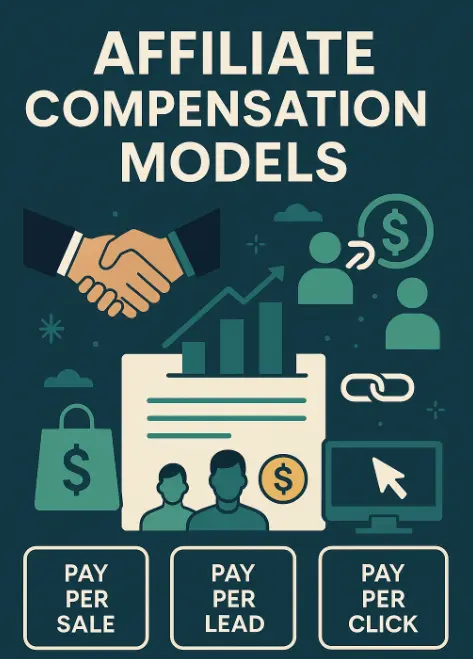
How to Build a Successful B2B Affiliate Program
Launching a B2B affiliate marketing program isn’t a “set it and forget it” endeavor. It requires careful planning, execution, and ongoing optimization. Below are the key steps to create and scale a program that delivers results for your SaaS brand.
Step 1: Define Clear Goals and KPIs
Start by identifying what you want to achieve with your affiliate program. Are you focused on affiliate lead generation, increasing trial sign-ups, or driving direct sales? Clear goals will shape your compensation model, affiliate recruitment strategy, and performance metrics.
Common KPIs for B2B affiliate programs include:
- Number of qualified leads generated
- Conversion rate from lead to customer
- Customer acquisition cost (CAC) via affiliates
- Average revenue per affiliate-referred user (ARPU)
Step 2: Choose the Right Affiliate Software
Managing an affiliate program manually is a recipe for chaos. Invest in affiliate tracking software to streamline recruitment, tracking, and payments. Popular platforms for B2B SaaS include:
- Impact – Great for large-scale programs with robust reporting.
- Post Affiliate Pro – Affordable and customizable for smaller teams.
- Refersion – User-friendly for SaaS startups.
These tools provide unique tracking links, dashboards for affiliates, and automated payout systems, saving you time and reducing errors.
Step 3: Recruit the Right Affiliates
The success of your program hinges on partnering with affiliates who can reach your ideal customer profile (ICP). Focus on quality over quantity by targeting:
- Industry Bloggers and Influencers: Content creators with authority in your niche can drive targeted traffic through reviews or tutorials.
- Complementary SaaS Companies: SaaS partnerships with non-competitive tools can unlock cross-promotion opportunities. For example, a project management tool might partner with a time-tracking app.
- Consultants and Agencies: B2B service providers often recommend software to clients, making them valuable allies.
- Community Leaders: Moderators of relevant forums, LinkedIn groups, or Slack communities can amplify your reach.
To attract affiliates, offer competitive commissions, provide marketing materials (like banners and email templates), and communicate the mutual benefits of your partner programs.
Step 4: Provide Ongoing Support
Once affiliates are onboard, don’t leave them to fend for themselves. Offer training on your product, regular updates on promotions, and a dedicated point of contact for questions. A supported affiliate is a motivated affiliate.
Step 5: Monitor and Optimize Performance
Use your affiliate software to track performance metrics and identify top performers. Analyze which affiliates drive the most value and double down on those relationships. At the same time, address underperforming partnerships by providing feedback or rethinking your compensation structure.
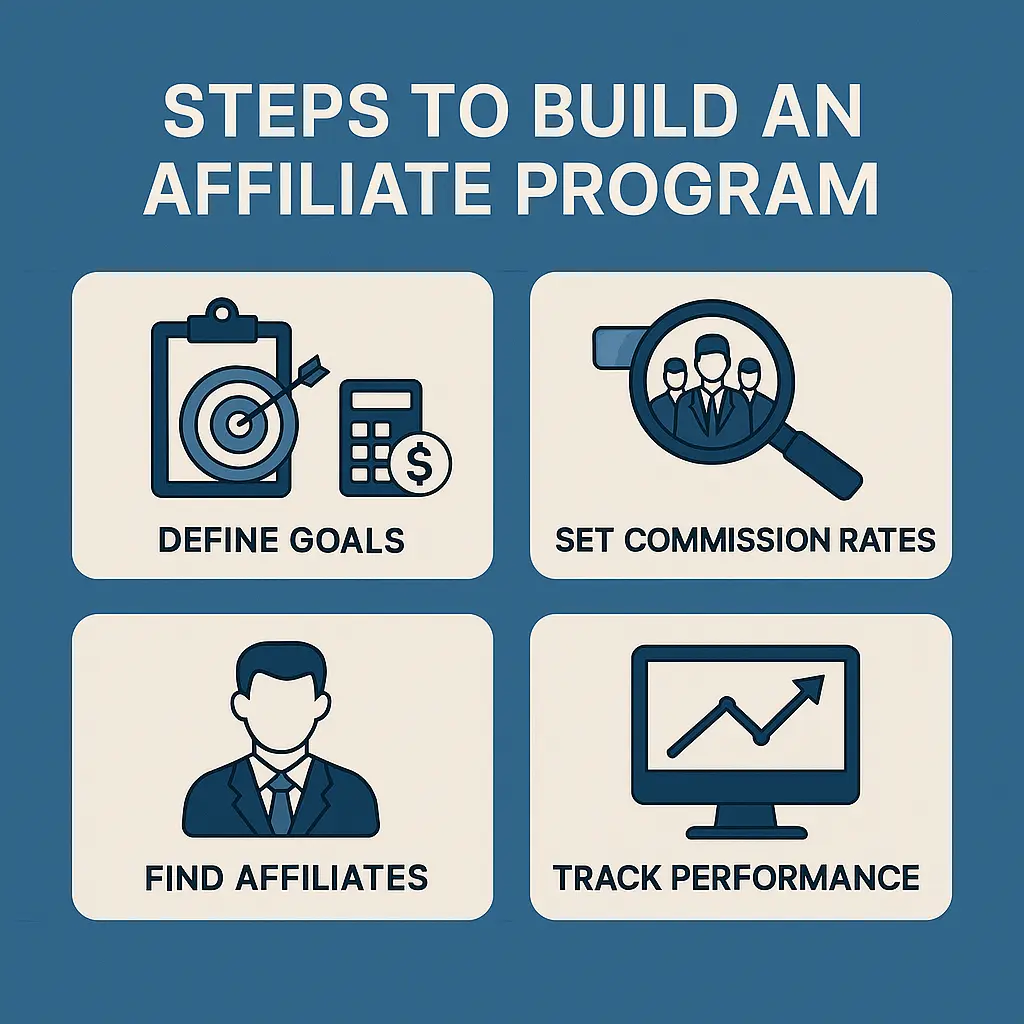
Common Pitfalls to Avoid in B2B Affiliate Marketing
While B2B affiliate marketing holds immense potential, it’s not without challenges. Here are some common pitfalls SaaS brands encounter and how to steer clear of them:
1. Lack of Clear Guidelines
Without explicit rules, affiliates may misrepresent your brand or use unethical tactics to drive traffic. Create a detailed affiliate agreement outlining acceptable promotional methods, brand messaging, and reporting requirements.
2. Focusing on Quantity Over Quality
Signing up dozens of affiliates who deliver low-quality leads wastes time and resources. Prioritize partners with access to your target audience, even if that means a smaller network initially.
3. Inadequate Tracking
Poor tracking leads to disputes over commissions and missed opportunities for optimization. Invest in reliable software and test tracking links before launching campaigns.
4. Neglecting Affiliate Relationships
Treating affiliates as mere vendors rather than partners can sap their motivation. Foster strong relationships through regular communication, bonuses for high performers, and timely payments.
5. Ignoring Compliance and Legal Risks
B2B affiliate marketing must comply with data privacy laws like GDPR or CCPA, especially when handling leads. Ensure affiliates adhere to regulations and disclose their affiliate status in promotions, as required by the FTC. Learn more about compliance at FTC.gov.
Case Studies: B2B Affiliate Marketing Success Stories
Seeing real-world examples can inspire confidence in adopting affiliate marketing for your SaaS brand. Here are two success stories that highlight the power of well-executed partner programs:
HubSpot
HubSpot, a leading CRM and marketing platform, has built one of the most successful B2B affiliate programs in the SaaS space. By partnering with marketing agencies, consultants, and bloggers, they incentivize affiliates with recurring commissions for referred customers. Their program has driven significant growth in lead generation while reinforcing HubSpot’s position as an industry authority.
Slack
Slack’s affiliate strategy focuses on SaaS partnerships with productivity and collaboration tools. By integrating with complementary apps and offering mutual referral incentives, Slack has expanded its reach to new business audiences, showcasing how strategic alliances can amplify growth.
These examples underscore that B2B affiliate marketing isn’t just theoretical—it’s a proven channel for scaling SaaS companies when done right.
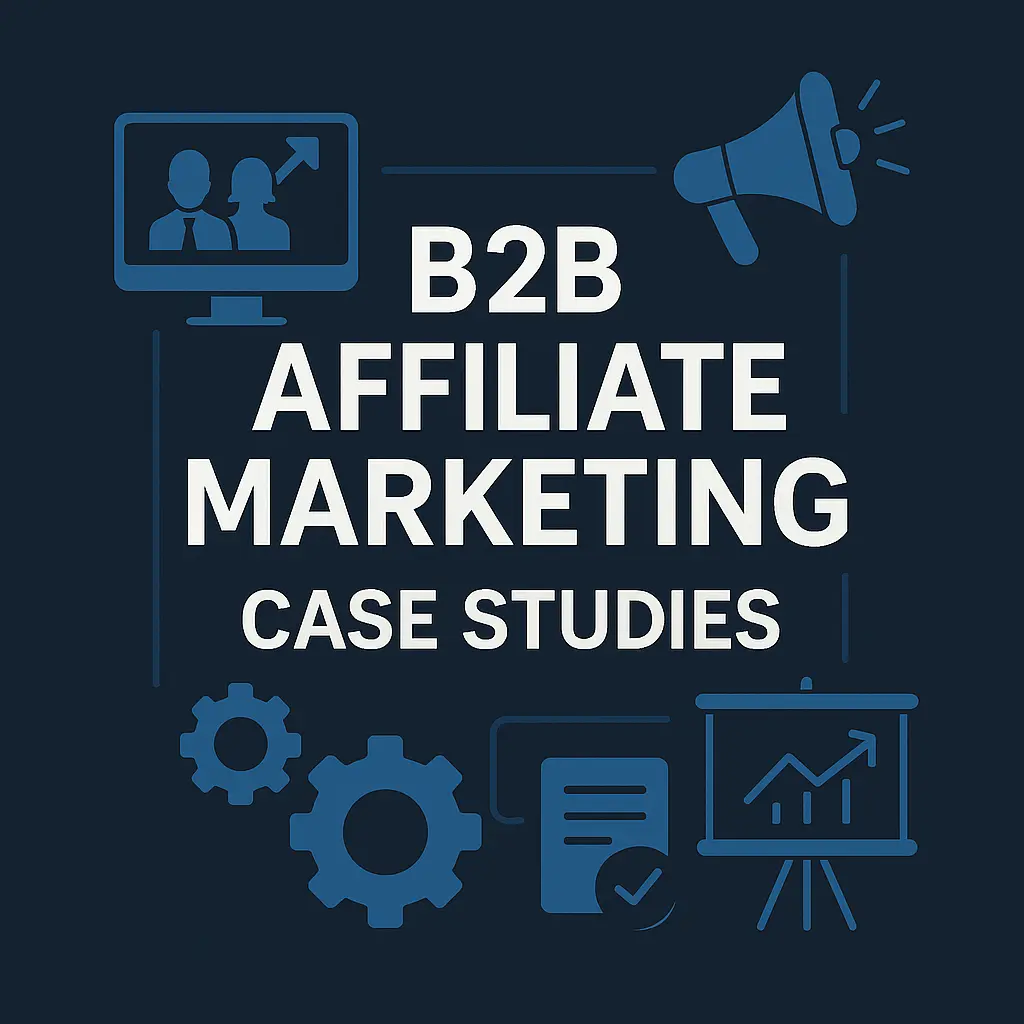
Scaling Your B2B Affiliate Program
Once your program is up and running, the next step is scaling it for maximum impact. Here are actionable tips to take your affiliate marketing to the next level:
- Increase Commission Tiers: Reward top-performing affiliates with higher rates to encourage sustained effort.
- Expand Affiliate Types: Diversify your network by recruiting new categories of affiliates, such as podcasters or webinar hosts.
- Leverage Automation: Use advanced tools to automate recruitment, tracking, and payouts, freeing up time for strategy.
- Test New Markets: Experiment with affiliates in different geographies or industries to uncover untapped opportunities.
- Host Affiliate Contests: Drive engagement by offering bonuses or prizes for affiliates who hit specific targets during a campaign period.
Scaling requires balancing growth with oversight—ensure quality doesn’t suffer as your program expands.
Conclusion: The Future of B2B Affiliate Marketing for SaaS
Affiliate marketing is no longer just an eCommerce play—it’s a smart, scalable growth channel for B2B and SaaS brands willing to embrace it. By leveraging performance marketing through strategic partner programs, companies can unlock new sources of affiliate lead generation, reduce acquisition costs, and build lasting relationships with trusted advocates. From choosing the right compensation model (rev-share, CPL, or hybrid) to recruiting high-value affiliates and avoiding common pitfalls, the path to success lies in careful planning and execution.
Unlock Scalable Growth with the Power of B2B Partnerships
As the B2B landscape grows more competitive, innovative growth channels like affiliate marketing will become essential for staying ahead. The question isn’t whether you can afford to invest in a program—it’s whether you can afford to ignore one. Start small, test your approach, and scale with purpose. The future of SaaS growth may very well lie in the power of partnerships, and now is the time to stake your claim in this underutilized space.
For further reading on building effective programs, explore resources from industry leaders like Affiliate Marketing Insider. Your journey to mastering B2B affiliate marketing starts today—where will it take you?
Ready to jump right in? Let’s talk an see how RnD Marketing can take your Affiliate marketing to the next level!
How much can a B2B SaaS company expect to save on customer acquisition costs through affiliate marketing?
B2B SaaS companies implementing affiliate marketing typically see a 20-30% reduction in customer acquisition costs (CAC) compared to traditional paid advertising channels. According to recent industry data, the average CAC for SaaS companies through paid search is around $205 per customer, while affiliate-referred customers often cost between $140-165 each.This efficiency stems from the performance-based payment model, where you only pay for actual results rather than impressions or clicks. Additionally, the built-in trust factor of affiliate recommendations leads to higher conversion rates – averaging 3-5% for affiliate traffic versus the typical 1-2% from direct advertising channels.
It’s worth noting that results vary based on program structure, commission rates, and the quality of your affiliate partners. Companies with well-established affiliate programs report that after 12-18 months of operation, affiliate channels can contribute 15-25% of new customer acquisition while consuming only 8-12% of their marketing budget.
What commission rates should I offer to attract quality B2B affiliates?
For B2B SaaS products, competitive commission rates typically fall into these ranges:• Revenue share model: 20-40% of the first year’s revenue or 15-30% recurring for the customer lifetime. Enterprise SaaS products with higher price points might offer 10-20%, while lower-priced solutions might go as high as 50% to incentivize affiliates.
• Cost Per Lead (CPL) model: $50-150 per qualified lead, depending on your sales conversion rates and average deal size. According to recent benchmark reports, the average B2B software lead is valued at approximately $35-75, but high-quality enterprise leads can command $100-200+.
• Hybrid models: Often include a $25-50 lead payment plus 10-15% of first-year revenue.
The most successful programs tailor commission structures to align with their customer lifetime value. For instance, if your average customer stays for 3 years with an annual value of $2,000, a 20% first-year commission ($400) represents just 6.7% of their total lifetime value ($6,000), making it a profitable arrangement despite the seemingly high upfront commission.
How long does it typically take to see results from a new B2B affiliate program?
Most B2B affiliate programs require 3-6 months to gain meaningful traction. Unlike B2C programs that might see immediate sales, B2B affiliate marketing aligns with longer sales cycles and requires relationship building. Here’s a typical timeline:• Months 1-2: Program setup, recruitment of initial affiliates, and creation of promotional materials. During this phase, expect minimal results as you’re building infrastructure.
• Months 3-4: Early adopter affiliates begin promotional efforts, initial leads start entering your pipeline. Data shows only about 10-15% of your total affiliate-driven results will occur in this phase.
• Months 5-6: Lead volume increases as affiliates optimize their promotion strategies. According to industry benchmarks, this is when most programs start seeing positive ROI.
• Months 6-12: Program maturation with consistent lead flow and conversion patterns. By the 12-month mark, successful programs typically have 30-50 active affiliates generating 20+ qualified leads monthly.
A 2022 study by Affiliate Insider found that B2B SaaS companies investing in affiliate marketing saw an average of 7 months to break even, with significant growth acceleration in quarters 3-4 of program operation.
What are the key metrics I should track to measure my B2B affiliate program’s success?
To effectively measure your B2B affiliate program’s performance, focus on these critical metrics:• Affiliate Activation Rate: The percentage of recruited affiliates who actively promote your product. Industry benchmarks suggest a healthy program should maintain at least 20-30% active affiliates.
• Lead-to-Customer Conversion Rate: Track how affiliate-generated leads convert compared to other channels. According to recent data, affiliate leads convert at 1.5-2x the rate of paid advertising leads for most B2B products.
• Affiliate Customer LTV: Measure whether customers acquired through affiliates have different retention rates or expansion revenue. Research shows affiliate-referred B2B customers typically have 5-10% higher retention rates than average.
• Program ROI: Calculate your total program costs (commissions, software, management) against revenue generated. Mature B2B affiliate programs average 300-500% ROI according to industry reports.
• Customer Acquisition Cost (CAC): Compare your affiliate CAC to other channels for proper resource allocation. The median B2B SaaS company sees approximately 22% lower CAC through affiliate programs vs. paid search.
• Time-to-First-Sale by Affiliate: This helps identify which affiliates understand your value proposition best. Top-performing affiliates typically generate their first sale within 45-60 days of program activation. Read more about affiliate KPIs here.
Which affiliate tracking platforms work best for complex B2B sales cycles?
B2B sales cycles require specialized affiliate platforms that can handle longer conversion windows and multi-touch attribution. Here are the top platforms specifically suited for B2B SaaS companies:• Impact (formerly Impact Radius): Ideal for enterprise-level B2B companies, offering customizable attribution models that can track complex customer journeys lasting 90+ days. Pricing starts at $1,500/month but scales with program size.
• Partnerstack: Purpose-built for SaaS companies with features like deal registration, lead tracking, and API-based integration with CRM systems. Their recent 2023 platform update added enhanced multi-touch attribution capabilities specifically for B2B sales.
• FirstPromoter: Popular with SaaS startups for its affordable pricing (starting at $49/month) while still offering essential B2B features like lead tracking and custom conversion windows.
• Everflow: Offers robust features for tracking both leads and conversions with customizable attribution windows up to 365 days, essential for longer B2B sales cycles.
When selecting a platform, prioritize those offering: cookie durations of 90+ days, CRM integration capabilities, lead status tracking, and custom event tracking beyond just the final purchase. According to recent surveys, 67% of successful B2B affiliate programs use platforms with these specific capabilities. More about the best affiliate tracking platforms here.
How can I find and recruit high-quality B2B affiliates for my SaaS product?
Finding quality B2B affiliates requires a targeted approach focused on relevance over quantity. Here are proven recruitment strategies with current success rates:• Existing Customer Base: Convert satisfied customers into affiliates, starting with those who’ve already provided testimonials. This approach has a 15-20% conversion rate and typically yields highly effective affiliates.
• Industry Content Creators: Identify bloggers, YouTubers, and newsletter authors covering topics related to your solution. Recent data shows that content affiliates generate 35% more qualified leads than general affiliates in the B2B space.
• Complementary SaaS Partners: Approach non-competing tools with overlapping customer bases. According to partnership marketing statistics, these affiliates have the highest conversion rates (4-7% vs. the average 2-3%).
• B2B Service Providers: Consultants, agencies, and managed service providers who serve your target audience can be powerful affiliates, with 47% of successful B2B affiliate programs reporting them as top performers.
• Specialized B2B Affiliate Networks: Platforms like PartnerStack and Impact have pre-vetted B2B affiliates, though expect to pay 20-30% higher commissions for this convenience.
Pro tip: Personalize your outreach with specific ideas about how the potential affiliate could promote your product to their audience. Personalized recruitment emails show 3x higher response rates than generic templates according to recent outreach studies.
What legal considerations should I be aware of when launching a B2B affiliate program?
B2B affiliate programs face several important legal and compliance considerations that differ from B2C programs:
• FTC Disclosure Requirements: Even in B2B marketing, affiliates must clearly disclose their financial relationship with you. The FTC updated its guidelines in 2023, emphasizing that B2B marketing is not exempt from disclosure requirements.
• Data Privacy Regulations: If your affiliates collect lead information, ensure compliance with relevant laws like GDPR (EU), CCPA/CPRA (California), and emerging state privacy laws. A recent survey found that 68% of B2B affiliate programs had to adjust their lead collection processes to remain compliant.
• Affiliate Agreements: Create legally binding contracts that specify prohibited marketing tactics, confidentiality clauses, and termination conditions. Include clauses about trademark usage, competitive promotion restrictions, and commission dispute resolution.
• Tax Reporting: In the US, you’ll need to issue 1099 forms to affiliates earning over $600 annually. For international affiliates, be aware of potential tax withholding requirements, which vary by country.
• Vertical-Specific Regulations: B2B products in regulated industries (finance, healthcare, etc.) face additional restrictions. For example, HIPAA compliance is essential for healthcare SaaS affiliate programs, with violations potentially resulting in fines of $100-$50,000 per violation.
Consider consulting with a lawyer experienced in affiliate marketing regulations, as 23% of companies in a recent industry survey reported facing legal challenges with their affiliate programs due to inadequate preparation.

